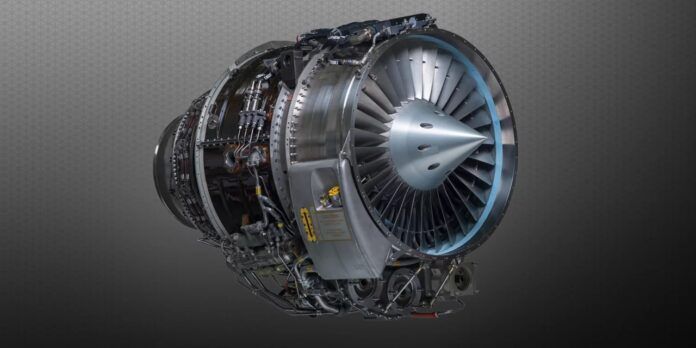Honeywell’s TFE731 turbofan engine, which has powered aircraft including the Dassault Falcon 900, Bombardier Learjet 70/75 and Gulfstream 150, has passed its fifth decade. Honeywell reports that it has produced around 13,000 TFE731s since the TFE731-2 was certified in August 1972, with 9,400 still in service. Over the past 50 years, the engine family has logged more than 108 million flight hours.
“The TFE731 was the first turbofan engine designed to meet the specific needs of business aviation; most other engines of the era were adapted from existing military jet engines,” the company said. “As Honeywell’s first turbofan, the TFE731 launched one of our signature aerospace businesses, eventually leading to development of the groundbreaking HTF7000 engine family, which has taken the super-midsize market to a new level of performance and reliability.”
The TFE731-2 offered 3,500 pounds of takeoff thrust and entered service with launch customers Learjet and Dassault. Today, the TFE731 family delivers 3,500 to 5,000 pounds of thrust and has been produced in 80 configurations. It has received 34 aircraft type certifications and has been used by manufacturers such as Cessna, Lockheed, Israel Aerospace Industries and Raytheon/Hawker Beechcraft.




































This would be an interesting subject for an article describing the TFE731 development. It is rumored the engine was developed from an APU power-plant. I recall when our flight dept operated early conversion applications in which the 731 replaced first-generation turbojets on DH-125 and Lockheed Jet-Star first-gen jets. Jet fuel back then was 50-cents per gallon and the main reason to consider the conversion was not fuel costs but improved range and noise. At that time interest-rates were running in the 8-12% range and so the interest on the $3M conversion cost would pay for all the fuel burned by the older engines. At that time the 71s were also suffering a high rate of fuel pump/control failures, and when the Jet-Star conversion was being considered for the Jet-Star our parent-company CP (who was hoping the company to replace the Jet-Star with a G-II) was overheard to say “I’d rather fly across the Atlantic on one Spey than four 731s.”
The TFE-731 has come a long way since then.
I meant to also say that the first time I ever flew the “pond” was in a 731-converted 125 using Omega/VLF…another 1970s/80s “high-tech” item which the 731 outlasted in fine form.
You are correct, it was originally an APU for the DC-10.
https://en.wikipedia.org/wiki/Garrett_TFE731
An interesting back story concerns the origins of the engine at Garrett AiResearch, its founder Cliff Garrett and the genius of his turbine expert, Walter Ramsaur. Born in Shelby, NC, Ramsaur was from a family known for its construction and operation of mills (the first rotating machinery) on the many streams flowing eastward down from the Blue Ridge Mountains. The family heritage goes back to their homeland in the foothills of the Bavarian Alps where mills are also driven by Alpine streams. Both Garrett and Ramsaur were self-taught engineers with numerous patents on rotating machinery. Garrett used this to pioneer the development of turbochargers used worldwide in vehicles.